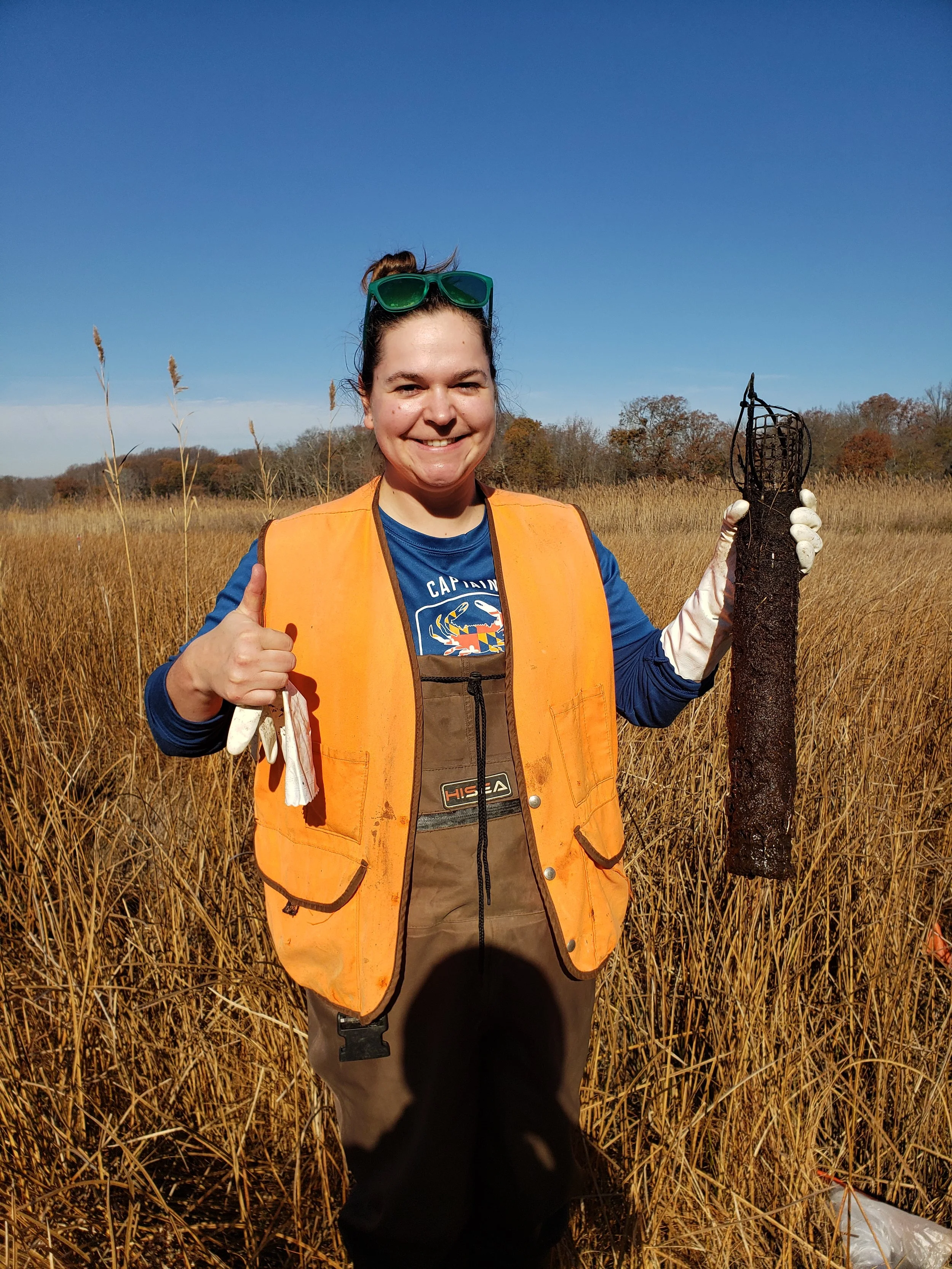Erika Koontz
Current Job: Natural Resources Biologist III
Current Project: SAV Restoration in Chesapeake Bay
State(s) working in: Maryland
Where are you from: Woodbine, Maryland
What do you think is the main reason we should protect SAV?
In Maryland alone, SAV helps support the fisheries and aquaculture industries, estimated to be valued at $600 million dollars annually. Protecting SAV is vital to sustaining the populations of oysters, blue crab, and rock fish that many Marylanders, including myself, enjoy eating!
How do you feel your research will make a difference in the SAV community?
My research will improve our understanding of near-shore impacts to SAV, quantitatively evaluate SAV restoration outcomes, and improve SAV restoration effectiveness.
What is one of your best memories working with SAV?
A few years ago, I was conducting field work for my M.S. at a living shoreline in the Chesapeake Bay. During the in-water transects, we were walking through a dense bed of widgeongrass, and I thought it was one of the coolest experiences ever.
What keeps you motivated to keep caring about the future of SAV?
SAV provides numerous benefits, including enhanced carbon storage (they sequester more carbon than emergent marsh habitats), wave attenuation that minimizes shoreline erosion, and habitat for numerous critters at various life stages. Retaining these benefits keeps me motivated to keep caring about the future of SAV, particularly the species found in the Chesapeake Bay.
More about Erika’s story
Erika Koontz earned her B.A. degree in Environmental Studies, with minors in Biology and Hispanic Studies and a concentration in Chesapeake Regional Studies from Washington College (Chestertown, MD) in 2017. Shortly thereafter, she transitioned to a research technician position at the University of Maryland Center for Environmental Science Horn Point Laboratory (UMCES-HPL, Cambridge, MD) to work on agricultural best management practices to reduce non-point source pollution of nitrogen, phosphorus, and sediment. She then went on to work for the Smithsonian Environmental Research Center (SERC, Edgewater, MD) on tidal wetland greenhouse gas emissions of methane, and published her first, first-author paper (with 46 co-authors) on that work to quantify the spatial variation in porewater methane from tidal marsh systems across the coastal U.S., from Alaska to Maine. Afterwards, she decided she was ready to pursue her M.S. degree in Marine, Estuarine and Environmental Science and returned to UMCES-HPL to evaluate the impacts of different living shoreline designs on near-shore SAV bed density and area. While en route to completing her M.S. (est. Fall 2025), she successfully landed a position with the Maryland Department of Natural Resources as a Natural Resources Biologist with the SAV group, headed by Brooke Landry. She likes to say that her career so far has taken her further down the tidal frame with each step, starting in non-tidal freshwater on farms, then moving to tidal marshes, and finally working with the submersed plant community. In her spare time, she is an avid birder, enjoys every activity involving the outdoors, gardening, and spending time with her cat, Miley.

